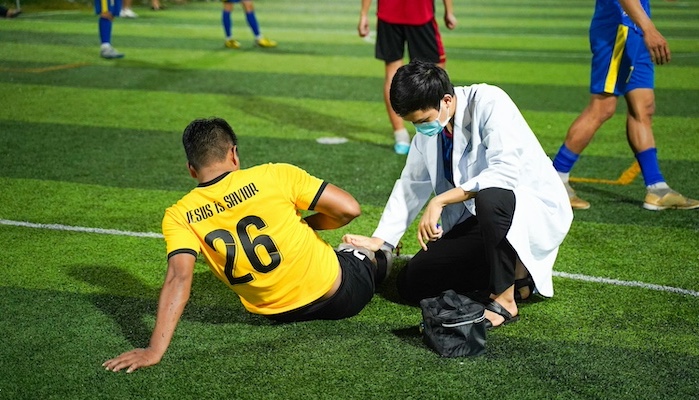
In the summer, more athletes participate in outdoor sports such as basketball, soccer, baseball, flag football, biking, and hiking. With this in mind, it’s important to remember that activities involving more running, heavy impact, falling, or overuse can be accompanied by a higher risk of hip injuries in athletes and weekend warriors.
Labral Tears
Athletes participating in organized sports or outdoor activities with sudden twisting or pivoting motions, common in golf, soccer, ballet, hockey, and football, are at a high risk of developing hip labral tears. The labrum is a ring of soft elastic tissue following the hip joint's outside rim. The labrum acts like a socket or seal to hold the “ball” at the top of your femur in place.
A labral tear may cause minimal symptoms, or athletes can experience more severe symptoms such as groin pain or locking, clicking, or catching sensations in the hip joint. There may also be stiffness or a limited range of motion in the joint. Initial treatment may include anti-inflammatory medications and physical therapy. If the athlete still has significant pain, they should be evaluated by an orthopedic surgeon, who will perform diagnostic studies, such as MRI, and may recommend hip arthroscopy to repair damaged labral tissue.
Hip Pointers
Besides pivoting injuries, another common cause of hip problems is from direct blows to the outside of the hip, commonly known as “hip pointers.” Although they classically occur in sports like football or hockey, hip pointers can also occur in basketball players, bike riders, climbers, or hikers who may have fallen on the side of their hip. Running, jumping, and twisting typically intensify the pain.
Diagnosing hip pointers is straightforward because athletes can recall a specific event that resulted in pain in the hip region. Initial treatment of hip pointers involves rest, ice, compression, and the use of anti-inflammatory medication. Injuries usually resolve over a few weeks and are best treated with conservative measures, but if symptoms persist, an evaluation by an orthopedic surgeon is warranted to rule out other injuries such as labral tears or fractures.
Pulled or Torn Hamstring
Improper conditioning or inadequate stretching is another common mechanism that can lead to a hip injury like a pulled hamstring. The hamstrings are a group of three muscles that run along the back of the thigh, connecting the pelvis to the knee. Athletes can partially or completely tear these muscles in one of three locations: by the pelvis, at the muscle tendinous junction (where the muscle meets the tendon midthigh), or at the knee. They will experience a sudden, sharp pain in the back of the thigh during activity. There may be swelling or tenderness within a few hours of injury with possible bruising or discoloration along the back of the leg.
Rest, ice, and over-the-counter pain medication are often all that is needed to relieve the pain and swelling of a mild hamstring strain. Returning to strenuous activities before the hamstring muscles are completely healed may increase the likelihood of repeating the injury; therefore, participation in sports should resume only after physical therapy and full recovery.
Preventing Hip Injuries
For most sports hip injuries, preventative measures are critical. Proper stretching and conditioning help prevent labral tears and pulled hamstrings. Likewise, appropriate padding and proper technique can help prevent hip pointers.
Hip injuries should never be neglected! Athletes with persistent symptoms and pain should consult with an interventional pain management specialist.
Precision Pain Care and Rehabilitation has two convenient locations in Richmond Hill – Queens, and New Hyde Park – Long Island. Call the Queens office at (718) 215-1888 or (516) 419-4480 for the Long Island office to arrange an appointment with our Interventional Pain Management Specialists, Dr. Jeffrey Chacko or Dr. Sonny Ahluwalia.













